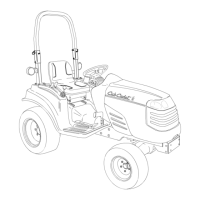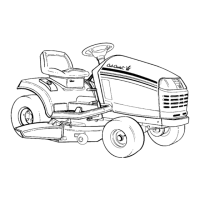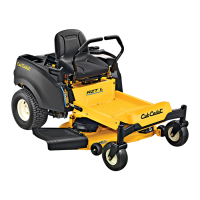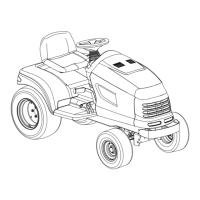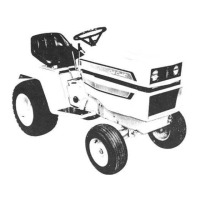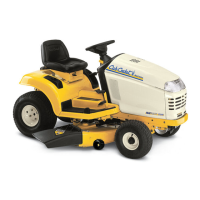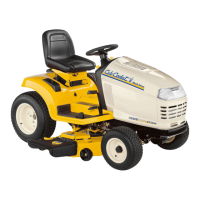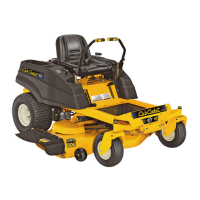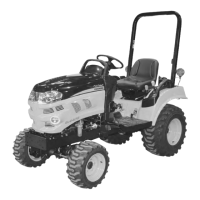Domestic Series 7000 Hydraulics
10
5.9. If the charge pump is working, but drive has
been lost in one direction only, one of the charge
check valves may not be working.
See Figure 5.9.
• There is a charge relief valve located in each cir-
cuit: one for forward, one for reverse.
• These check valves enable the charge pump to
provide charge oil to the side of the circuit that
has the lowest pressure, while sealing-off the
side that has higher pressure.
• The charge check valves are located on either
side of the hydrostatic drive.
• The one on the left side maintains pressure in
the forward circuit, the one on the right side
maintains pressure in the reverse circuit.
5.10. The charge check valves can be removed using
a 5/16” allen wrench.
NOTE: The one on the right side is easy to
reach. The one on the left side will be obscured
by the auxiliary pump and a steel hydraulic line if
the tractor is equipped with a second auxiliary
pump to operate a loader or backhoe.
5.11. When removed, each charge relief valve comes
out as a cartridge. See Figure 5.11.
5.12. The output of the variable displacement pump is
dependent upon the performance of the check
valves
5.13. If the hydrostatic drive must be replaced, it can
be removed from the tractor without removing
the fenders.
Figure 5.9
Charge
check valves
Figure 5.11
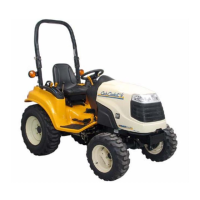
